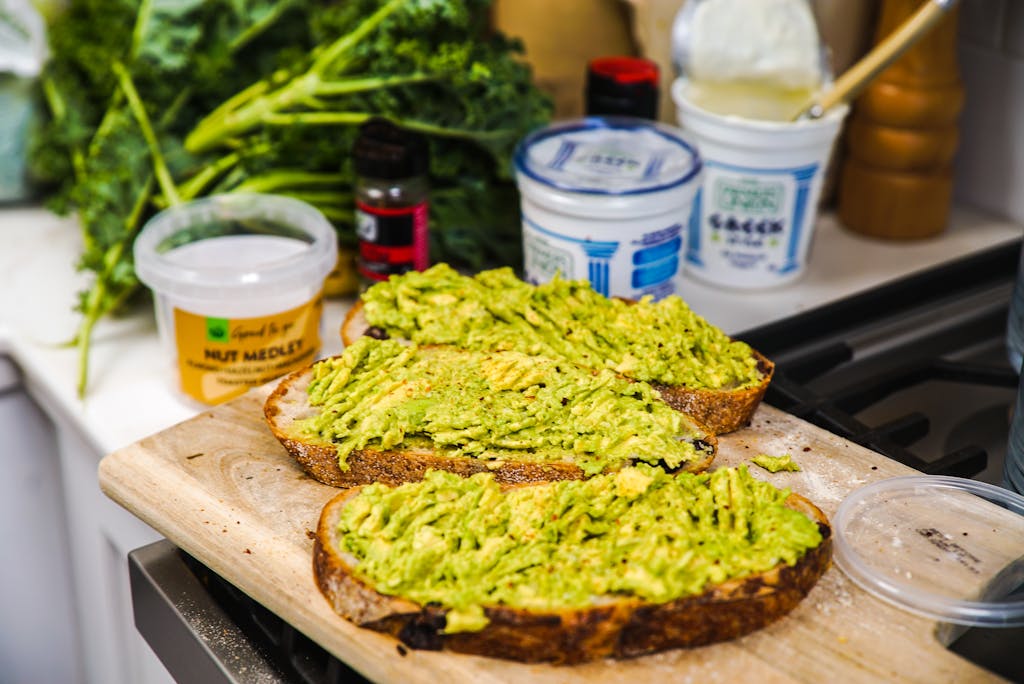FREE SHIPPING OVER $50
Ultra-Processed—but Healthy? These 8 Foods Break All the Rules

The term “ultra-processed food,” or UPF, has become the new boogeyman in the world of nutrition. We constantly hear warnings about how these industrially manufactured products—think chips, sodas, and frozen dinners—are responsible for everything from inflammation to chronic disease. This is a crucial conversation, yet it often simplifies a highly complex issue. The truth is, not every food that has been through a factory is a nutritional wasteland designed purely for hyper-palatability.
When we use the NOVA classification system to define ultra-processed foods, the net gets cast surprisingly wide, snagging some items that are undeniably packed with beneficial nutrients. The focus should shift from simply the degree of processing to the final nutritional quality. It’s time to move past the panic and acknowledge that convenience and health don’t always have to be mutually exclusive. We are here to answer the central question: can ultra-processed foods ever be healthy? The answer is a resounding yes, and these eight foods prove it.
Understanding the UPF Paradox: Processing vs. Nutrition
Before diving into the rule-breakers, we must clarify what the term ultra-processed actually means. By the strict NOVA criteria, a food is UPF if it results from a series of industrial processes and contains ingredients rarely used in home cooking, such as modified starches, hydrolyzed proteins, or certain emulsifiers. This definition is intended to flag low-quality, high-sugar, high-fat, high-sodium products, and for the most part, it does.
However, the definition also catches some highly functional and fortified foods. When a whole-grain loaf of bread is fortified with iron and made shelf-stable with a preservative, it technically jumps into the UPF category. When a commercial can of beans includes calcium chloride to keep the beans firm, it’s a UPF. For those of us navigating a busy life, these products offer a critical bridge to getting essential nutrients—like fiber, protein, and vitamins—quickly and affordably. We aren’t arguing for a diet of sugary breakfast cereals; we are advocating for smarter, more nuanced choices within the packaged food aisle.
The 8 Ultra-Processed Foods That Defy the UPF Label
These eight everyday foods are often caught in the UPF classification, yet they serve as important, nutrient-dense staples in a balanced, modern diet. They are the exception that proves the rule, offering convenience without compromising on health.
1. Whole-Grain Bread (Mass-Produced)
A fresh, artisanal loaf is minimally processed, but the sliced, packaged whole-grain bread you grab at the supermarket is usually a UPF. Manufacturers often add emulsifiers and preservatives to extend shelf life and ensure texture consistency.
- Why It Breaks the Rules: High-quality 100% whole-grain bread is a powerful source of dietary fiber and essential B vitamins like folate and thiamin. Unlike refined white bread, it helps stabilize blood sugar and supports digestive health. SEO Tip: Look for the words “100% whole wheat” or “whole grain” as the first ingredient to maximize the nutritional payout, regardless of the UPF label.
- Actionable Tip: Use it to build nutrient-rich sandwiches with lean protein and plenty of vegetables, effectively using the processed item as a vehicle for whole foods.
2. Fortified Whole-Grain Breakfast Cereals (Low-Sugar)
Many brightly colored, sugar-drenched cereals are the poster children for UPFs, but the more boring, fiber-rich versions often share the same UPF classification due to puffing, extrusion processes, and fortification.
- Why It Breaks the Rules: These cereals are frequently fortified with vital micronutrients that many people lack, including Iron, Calcium, and Vitamin D. Choosing a variety with minimal added sugar (ideally under 5g per serving) and high fiber content makes it a quick, high-impact nutritional choice, especially for children or individuals with specific dietary needs.
- Actionable Tip: Pair low-sugar whole-grain cereal with fresh berries and plain Greek yogurt to create a balanced, fiber- and protein-rich meal.
3. Canned and Dried Beans/Legumes
Canning beans requires the use of stabilizers like calcium chloride to maintain texture, pushing them into the processed or even ultra-processed category.
- Why It Breaks the Rules: Canned beans (black, kidney, garbanzo, etc.) are a nutritional powerhouse, offering an excellent source of plant-based protein, resistant starch, and massive amounts of fiber. The convenience factor is huge; they provide immediate access to a key ingredient for salads, soups, and chilis without hours of soaking and boiling.
- Actionable Tip: Always drain and rinse your canned beans thoroughly to reduce the sodium content by up to 40%. Opt for low-sodium or “no salt added” versions whenever possible.
4. Plain Greek Yogurt (Sweetened/Flavored)
Plain yogurt is minimally processed, but once manufacturers add fruit purées, flavorings, stabilizers, or non-nutritive sweeteners, the product often earns the UPF tag.
- Why It Breaks the Rules: Even with added sugars or non-nutritive sweeteners, flavored Greek yogurt retains its core benefits: a phenomenal amount of high-quality protein (often 15-20g per container) and essential probiotics for gut health. This nutritional density outweighs the minor processing ingredients, making it far superior to snacks like cookies or chips.
- Actionable Tip: Choose a plain Greek yogurt and add your own honey or fruit. If you must buy flavored, check the nutrition label and aim for a low-sugar, high-protein balance.
5. Protein Powders and Shakes
These products are the epitome of industrial formulation, created from isolates and concentrates (like whey isolate, soy isolate, or pea protein) and blended with flavors, gums, and emulsifiers. They are squarely in the UPF camp.
- Why It Breaks the Rules: For athletes, older adults, or anyone struggling to hit their protein targets, these shakes offer a rapid, highly convenient, and biologically available source of protein and often added vitamins. Protein intake is crucial for muscle synthesis, satiety, and metabolic health—a benefit that transcends the ultra-processed label.
- Actionable Tip: Look for powders with minimal added sugars and a short, recognizable ingredient list focused on the protein source. Blend them with whole fruits and spinach to maximize nutrient density.
6. Plant-Based Milk Alternatives (Fortified)
While basic nut milk (almond, soy, oat) is processed, the highly stabilized, fortified versions that contain gums, emulsifiers, and added vitamins are classified as UPFs.
- Why It Breaks the Rules: For individuals with dairy allergies, lactose intolerance, or those following a vegan lifestyle, fortified plant milks serve as a crucial source of Calcium and Vitamin D. These nutrients are added by manufacturers to match the profile of cow’s milk, actively improving the product’s nutritional function.
- Actionable Tip: Choose unsweetened varieties to avoid unnecessary sugar creep, and always look for “fortified” or “high in calcium/D” on the label.
7. Packaged Tofu and Tempeh
Tofu and tempeh undergo significant industrial transformation—soaking, grinding, coagulation (for tofu), and fermentation (for tempeh). They require packaging and sometimes small stabilizers.
- Why It Breaks the Rules: Both are dense sources of complete plant protein, healthy fats, and minerals like iron and calcium. Tempeh, specifically, is a fantastic source of prebiotics due to the fermentation process, supporting a thriving gut microbiome. Their high protein content makes them incredibly valuable for balanced meals.
- Actionable Tip: Use them as a meat replacement in stir-fries and scrambles. The minimal processing that occurs to make them shelf-stable is a worthwhile trade-off for their foundational nutritional value.
8. Whole-Wheat Pasta (Mass-Produced)
Making pasta requires milling and shaping, but mass-produced whole-wheat varieties use specific processing to ensure a long shelf-life and consistent cooking texture, often requiring a UPF classification.
- Why It Breaks the Rules: Whole-wheat pasta delivers significantly more fiber than its refined white counterpart, promoting better satiety and digestive regularity. Fiber content is often a major nutritional deficit in modern diets, and this UPF provides an accessible and convenient way to hit those daily targets.
- Actionable Tip: When preparing, practice portion control and load your plate with high-fiber sauces packed with crushed tomatoes, vegetables, and lean meat.
Making Smarter Ultra-Processed Choices
The key takeaway is that the blanket condemnation of all ultra-processed foods misses an opportunity to leverage convenience for better nutrition. You do not need to make every single food item from scratch to be healthy. The best strategy involves applying a filter to your UPF consumption.
- Prioritize Protein and Fiber: When evaluating any packaged item, check the Nutrition Facts panel first. If a food that is technically ultra-processed is providing meaningful amounts of protein and fiber—two nutrients that promote satiety and are often lacking in the average diet—it likely earns its place in your pantry.
- Look for Fortification: Actively look for fortification, especially with vitamins like D, B12, and calcium. This is an industrial process that genuinely boosts the nutritional profile of the final food product.
- Read the Ingredient List, but Don’t Panic: Longer lists are characteristic of UPFs, but learn to distinguish between harmless ingredients (like guar gum for stabilization or ascorbic acid for preservation) and ingredients that suggest low nutritional value (like high-fructose corn syrup, artificial colors, and hydrogenated oils).
Conclusion
By moving beyond the simplistic “processed equals bad” mindset, you empower yourself to make realistic, informed decisions. Ultra-processed foods are an undeniable part of the modern food landscape, but by focusing on high-quality, nutrient-dense items like these 8 rule-breakers, you ensure your convenient choices are always supporting your health goals. This is how you win the nutrition game in a busy world.
Related Articles
- Testosterone Tanking After 30? These 10 Foods Could Be Your Hormonal Lifeline
- This Everyday Root Could Lower Your Blood Pressure Naturally—Doctors Are Talking About It
- Men Over 50: Eat These 10 Protein-Packed Foods Daily to Stay Strong, Lean, and Energized
- The Protein Myth: 10 Plant Foods That Build More Muscle Than Meat—Sports Nutritionists Say You’ve Been Lied To
- Feeling Foggy? These 8 Brain-Boosting Foods Could Sharpen Your Mind—Dietitians Approve



